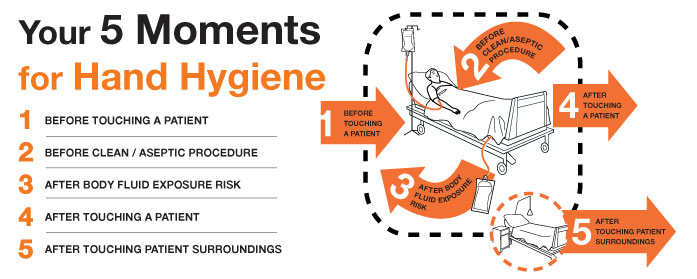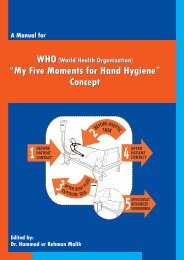

And more than 20 000 health facilities from 182 countries have signed up to the SAVE LIVES: Clean Your Hands campaign.

To date, more than 140 countries have pledged, promising to endorse hand hygiene, raise awareness of the burden and impact of HAIs, and commit to the implementation of the WHO Guidelines along with other selected actions from WHO strategies. Previously the campaign has linked with safe surgery, sepsis prevention and antimicrobial resistance (AMR). For 2019, the theme is ‘Clean care for all – it’s in your hands’, focused on linking IPC and hand hygiene with the topical ‘health for all’ global development agenda. Each year, WHO selects a theme and develops tools and promotional materials as necessary. This annual commemoration focuses on the continued global promotion, visibility and sustainability of hand hygiene. As explained by Vermeil T, et al, the date chosen is a reference to the symbolic power of five – the 5 moments for when to perform hand hygiene, the 5 elements of the multimodal strategy, and all centred around the five digits of a hand. This included the 5 Moment for Hand Hygiene.Īs an extension of the Clean Care is Safer Care program, WHO also stepped up its advocacy and campaigning work with the 2009 launch of the SAVE LIVES: Clean Your Hands global campaign on the 5 May, marking the first international day of hand hygiene in healthcare, 10 years ago. WHO also provided an array of tools for facilitating implementation, aimed at affecting structural and behavioural change at the point of care in the context of a favourable safety culture. Translating this into simple language, the strategy reads “ build it, teach it, check it, sell it, live it”. This consists of five elements to be addressed in parallel during implementation of hand hygiene improvement strategies: system change, training/education, evaluation and feedback, reminders in the workplace and the institutional safety climate. Importantly for improvement on the front line, WHO outlined what they termed a Multimodal Hand Hygiene Improvement Strategy. WHO published the first draft of the Guidelines on Hand Hygiene in Health Care in 2006 with a final, post-pilot version, in 2009. In 2005, the First Global Patient Safety Challenge program: Clean Care is Safer Care, whose flagship was hand hygiene promotion, was launched. The World Health Organization (WHO) launched the World Alliance for Patient Safety in 2004. But let’s examine some of the broad milestones from the last two decades that have affected global, regional and local actions to stop people getting infections through improved hand hygiene.

Their presence, where and when they’re needed, affects the behaviours of healthcare workers. In the last 20 years, how we approach hand hygiene improvement has changed drastically, including through the availability and use of alcohol-based hand rubs at the point of patient care. Performing hand hygiene at the right moment is an essential infection prevention and control (IPC) action for healthcare workers and plays a role in the prevention of HAI. Healthcare-associated infections (HAI) affect hundreds of millions of individuals worldwide.


 0 kommentar(er)
0 kommentar(er)
